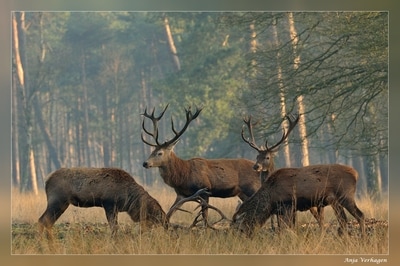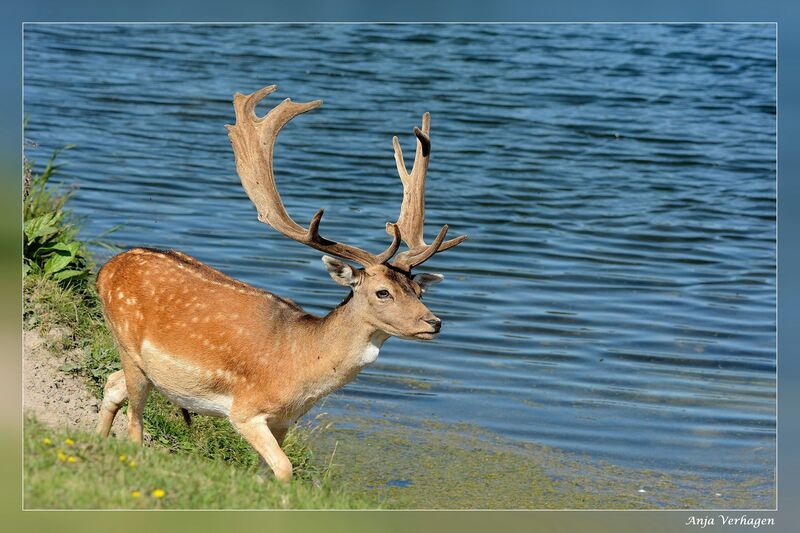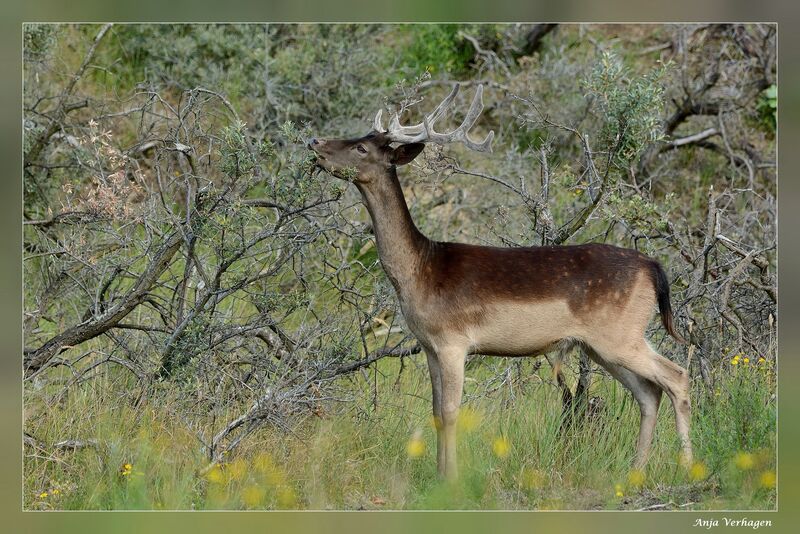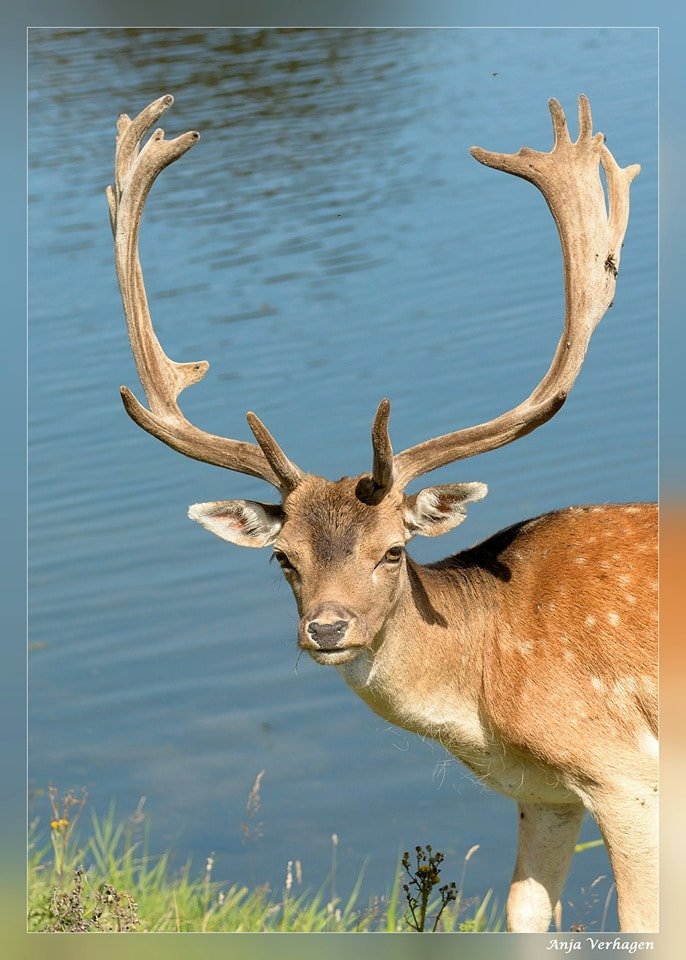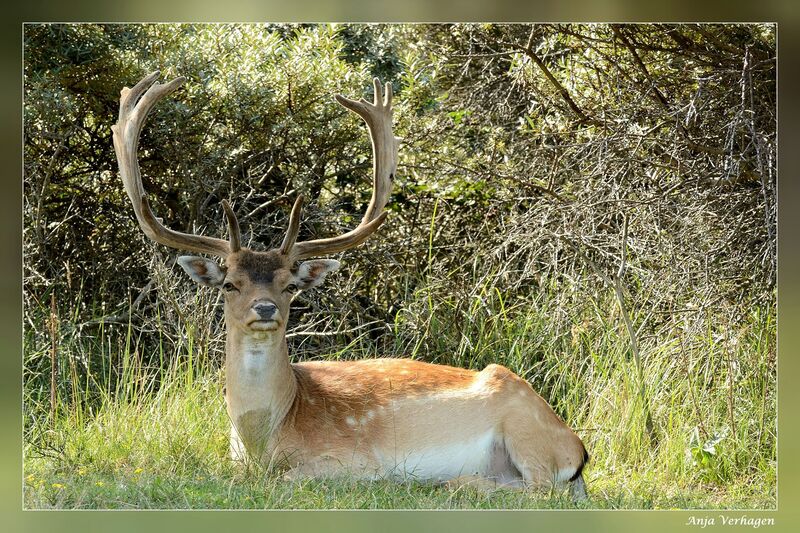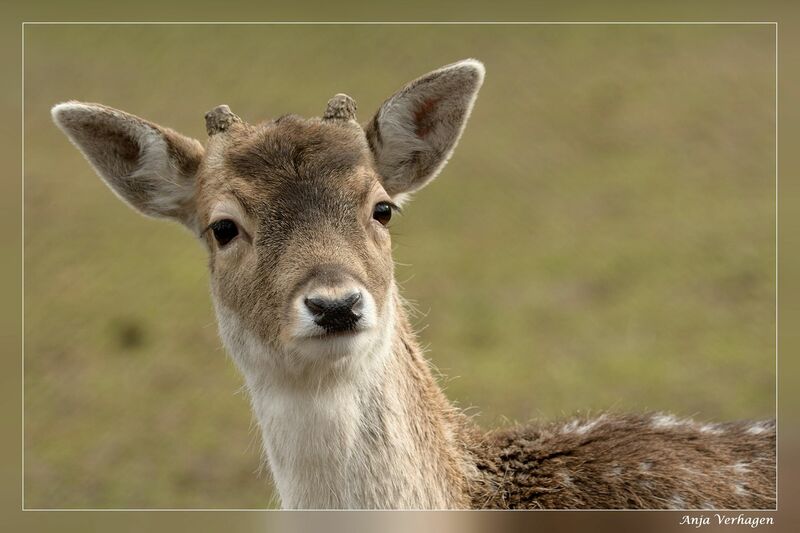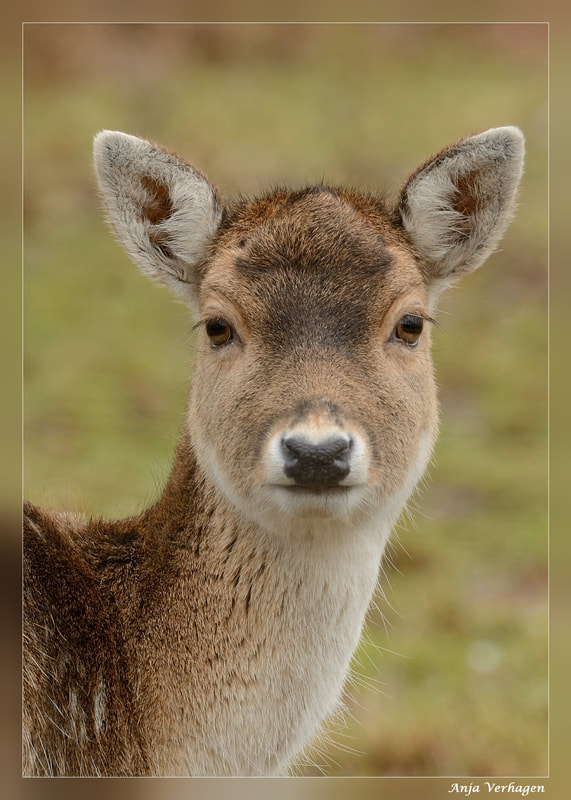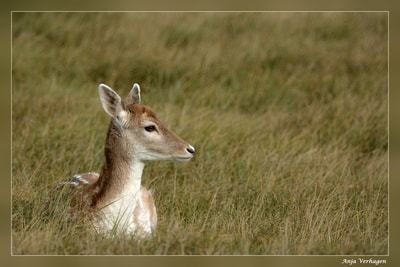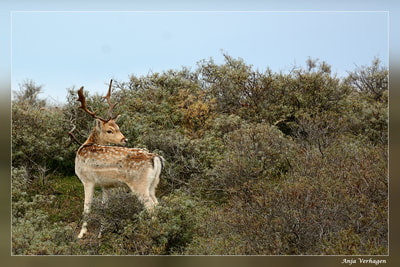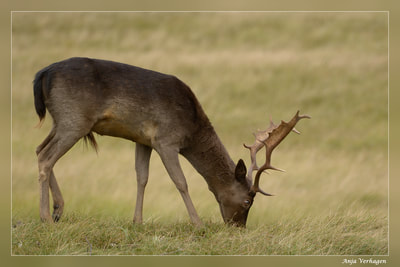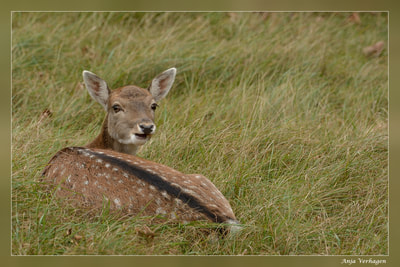Anja Verhagen fotografie
Hertachtigen - Deer
Edelhert - Red Deer
In de zomer zijn de dieren roodbruin van kleur, in de winter grijsachtig bruin. De buikzijde is wit en het staartstuk is roomkleurig. De rui begint eerst bij de kop, de poten en het voorlijf. In september begint de zomervacht plaats te maken voor de wintervacht, en in december is deze volledig vervangen. De zomervacht komt weer terug in mei, en is in juli of augustus compleet. De gemiddelde lichaamsgrootte van een edelhertenpopulatie wordt beïnvloed door meerdere factoren. Edelherten uit bosgebieden zijn kleiner dan die uit meer open gebieden, en de lichaamsgrootte neemt toe van het westen naar het oosten. Ook zijn mannetjes groter dan vrouwtjes De kop-romplengte ligt tussen de 165 en de 260 centimeter, de schouderhoogte tussen de 114 en de 140 centimeter. De staart is zonder het haar meegerekend tussen de twaalf en de vijftien centimeter lang, met haar ongeveer twintig centimeter. Mannetjes worden tot 255 kilogram zwaar, vrouwtjes tot 150 kilogram. Enkel het mannetje draagt een gewei dat gemiddeld zo'n 70 centimeter lang is, maar kan uitgroeien tot meer dan 90 centimeter. Het gewicht kan variëren van vier tot tien kilogram. Aan het gewei kan men enigszins de leeftijd aflezen.
In the summer the animals red brown in color, greyish Brown in winter. The ventral side is white and the tail is cream. The rui first begins at the head, feet and body. In september starts the summer coat to make room for the winter coat, and in december is fully replaced. The summer coat comes back again in may, and is complete in July or August. The average body size of a red deer population is affected by several factors. Red Deer from forest areas are smaller than those from more open areas, and the body size increases from the West to the East. Also, males larger than females The head-body length is between 165 and 260 centimeters, the shoulder height between 114 and 140 centimeters. The tail is without her seat between the twelve and fifteen centimeters long, with its approximately twenty centimeters. Males are up to 255 kilograms, females up to 150 kilograms. Only the male bears antlers that on average about 70 centimetres long but can grow to over 90 centimeters. The weight can range from four to ten kilograms. At the antlers one can somewhat read the age.
In the summer the animals red brown in color, greyish Brown in winter. The ventral side is white and the tail is cream. The rui first begins at the head, feet and body. In september starts the summer coat to make room for the winter coat, and in december is fully replaced. The summer coat comes back again in may, and is complete in July or August. The average body size of a red deer population is affected by several factors. Red Deer from forest areas are smaller than those from more open areas, and the body size increases from the West to the East. Also, males larger than females The head-body length is between 165 and 260 centimeters, the shoulder height between 114 and 140 centimeters. The tail is without her seat between the twelve and fifteen centimeters long, with its approximately twenty centimeters. Males are up to 255 kilograms, females up to 150 kilograms. Only the male bears antlers that on average about 70 centimetres long but can grow to over 90 centimeters. The weight can range from four to ten kilograms. At the antlers one can somewhat read the age.
Damhert - Fallow Deer
Het damhert is groter dan een ree en kleiner dan een edelhert. De kop-romplengte is 130 tot 170 centimeter en de schofthoogte 85 tot 110 centimeter. Het damhert kan 45 tot 100 kilogram zwaar worden, bij hoge uitzondering tot 130 kilogram. De staart is vrij lang: 16 tot 19 centimeter. Het mannetje ( hertenbok of schoffelaar genaamd ) wordt over het algemeen zwaarder dan het vrouwtje ( hinde genaamd ). Er zijn veel variaties in kleur, van wit via lichtbruin tot bijna zwart, maar meestal is de rugzijde roodachtig geel tot kastanjebruin van kleur en de buikzijde geelwit. De dominante kleur verschilt echter per gebied. In de winter is de vachtkleur grijzer. Het damhert ruit twee keer per jaar, een keer in mei of juni en een tweede keer in september of oktober. De vacht is meestal bezaaid met witte vlekjes, deze zijn in de winter minder opvallend.
The fallow deer is bigger than a deer and smaller than a red deer. The head-body length is 130 to 170 cm and the height 85 to 110 centimeters. The fallow deer can be 45 to 100 kilograms heavy, exceptionally up to 130 kilograms. The tail is quite long, 16 to 19 centimeters. The male ( stag or saadu called ) is generally heavier than the female ( doe ) There are many variations in color, from white through light brown to almost black, but usually the back reddish yellow to chestnut brown in color and have a yellowish ventral side. The dominant color varies by area. In the winter the coat color grayer. The fallow deer pane twice a year, once in may or June and a second time in september or October. The coat is usually studded with white spots, these are less noticeable in the winter.
The fallow deer is bigger than a deer and smaller than a red deer. The head-body length is 130 to 170 cm and the height 85 to 110 centimeters. The fallow deer can be 45 to 100 kilograms heavy, exceptionally up to 130 kilograms. The tail is quite long, 16 to 19 centimeters. The male ( stag or saadu called ) is generally heavier than the female ( doe ) There are many variations in color, from white through light brown to almost black, but usually the back reddish yellow to chestnut brown in color and have a yellowish ventral side. The dominant color varies by area. In the winter the coat color grayer. The fallow deer pane twice a year, once in may or June and a second time in september or October. The coat is usually studded with white spots, these are less noticeable in the winter.
